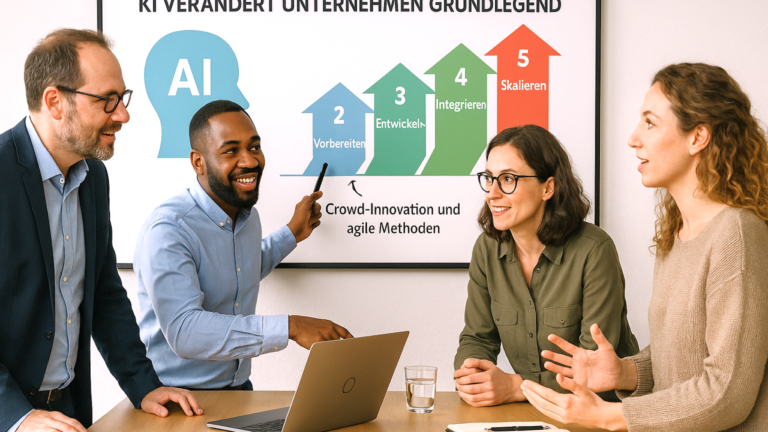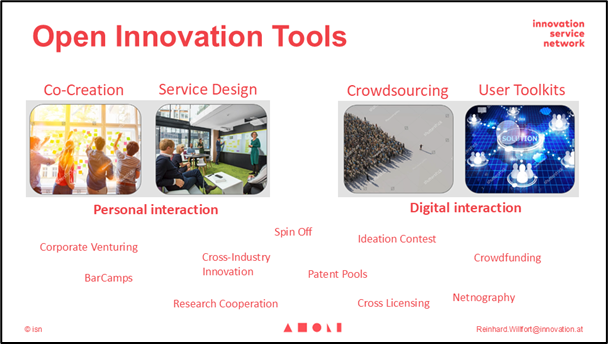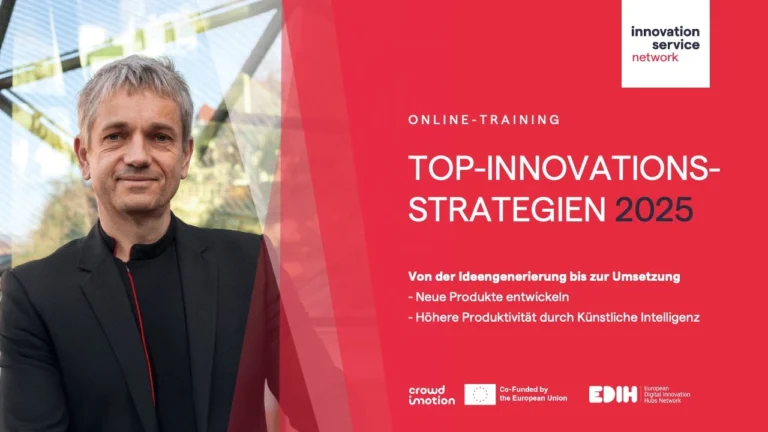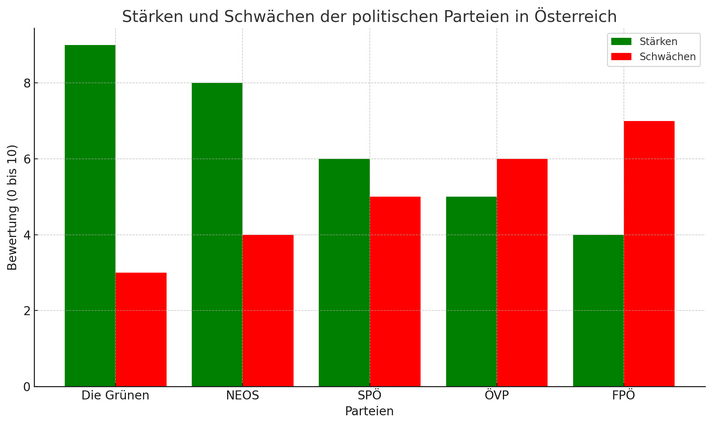

Innovation is a key driver in overcoming economic crises. Innovation management can quickly provide answers to current challenges and promote the resilience of companies.
The current economic crisis is hitting Germany and Austria particularly hard. The predictions of economic researchers hardly provide a sense of optimism. Companies lack the resources and often the courage of managers to navigate their way out of the crisis through innovation processes.
This is where an open innovation strategy can help: Open innovation mobilizes additional knowledge resources outside the company, creates a speed advantage and brings future customer wishes to the surface.
But doesn't this opening up create a little too much transparency for the company's own future? “What happens if our know-how flows away and we lose our valuable knowledge?”
These questions are classics that are first on the table in every open innovation project. Dealing with knowledge in companies is a sensitive issue. Experience shows that companies with little knowledge tend to keep their doors closed, while innovative companies seek networking and feedback.
In principle, every company should have a strategy for dealing with knowledge. This begins with the design of cross-company value chains and should also be formalized in cooperation agreements, non-disclosure agreements and property rights.
Open innovation is not “all open”, but requires clear rules so that everyone can participate with a good feeling. The willingness to collaborate with external partners has risen sharply in recent years. Large companies in particular have realized that they can hardly keep up with the speed of innovation of start-ups and that, with a bit of luck, they could become serious competitors.
Depending on the openness, scope and number of stakeholders, it may make sense to use different interaction models. In principle, open innovation can take place in person, e.g. through workshops or digital interaction.

The face-to-face format makes it possible to meet very familiar people in the same room and work on ideas through brainstorming. Barcamps are one of the most exciting and (usually) very open formats. However, this format is also increasingly being used in closed groups in companies.
In many cases, the crowdsourcing format is used in digital exchange. The aim is to achieve a high level of diversity and usually also a wide reach in order to gather different impulses. The “crowd” works on ideas, provides feedback and can network digitally on a permanent basis. In the near future, brands with large customer groups will build their own crowds. This will transform the linear list of customers into a “highly networked brain” around their own brand. This will create new resources and opportunities.
If you don't want to set up your own community, you can also access existing platforms to get inspiration from there. The EDIH Crowd in Motion (one of 151 European Digital Innovation Hubs) offers three open innovation platforms with several thousand creative users. In addition to the creative phase, which is about crowdsourcing ideas, the EDIH also offers modern forms of financing through crowdfunding.
Different advantages can be generated depending on the sector and objective. Three of these can be observed in all projects:
If the order book remains empty, there may be various reasons for this. Depending on your position in a value creation process, you will be closer or further away from the cause. However, if you know the cause of your own situation, you can work on solutions. In this respect, feedback from customers is extremely important, even if they are a “few hills” away from your own sphere of influence. From this, small changes can possibly be derived that help to achieve great things. In the medium term, this can also increase the company's resilience and agility.
Digital interaction on an innovation platform brings to light personality profiles that may be of interest to a company when recruiting. This can bring new knowledge into the company. In the spirit of “fair open innovation”, it is important to ensure that the interaction process is designed in an appreciative manner. Incentivization in open innovation can be very diverse and many participants are intrinsically motivated. For example, getting closer to a brand as a customer or even becoming a fan can be very meaningful.
Which company would you like to have worked for when you start your career? In most cases, people only know the first in an industry and base their purchasing behavior or job decisions on this. Open innovation can help to charge your own brand with innovation and thus generate appeal. As an employee, it's a good feeling to be at a company that is in a position to actively shape the future.
In the following, I would like to use a few examples to show what companies have already achieved with open innovation:
pewag is a global leader in chains and stands for top quality, durability and reliability even under extreme conditions. In 2021, many creative ideas on the subject of bicycle safety were developed from the user's perspective via an innovation platform . The aim was to build a new business segment on the pewag group's core expertise. With the "Serea Locks” bicycle lock, pewag enters the bicycle industry.
Österreichische Post AG lives sustainability. In order to involve the population in this project, an ideas initiative for sustainable reusable packaging was launched via the open innovation platform “Greenideas”. In a very short space of time, a community was established to work on solutions. The resulting Post Loop packaging has been on the Austrian market since 2023 - less than a year after the OI initiative was launched.
With the innovation task “Technologie sucht Anwendung”, dozens of open innovation campaigns have already been carried out at Fraunhofer in terms of research utilization. The current SAFE lighthouse challenge for the Helmholtz Center for Environmental Research shows the great potential of the creative Fraunhofer crowd: under the motto “Let's innovate together - together we develop strategies to inform more people about environmental chemicals”, an important topic is currently being addressed among the population. So far, 64 ideas have already been submitted.
Conclusion: Innovation is an effective key to getting out of an economic crisis, as it can generate both short-term and long-term solutions. Open innovation makes it possible to quickly identify new opportunities and increase competitiveness.
Instead of financing all innovation activities internally, companies (especially SMEs) can also share development costs with partners. The focus on cooperation can save resources and access to customer knowledge can reduce the risk of bad investments.
Open innovation provides companies with flexibility, dynamism and access to a broad knowledge base, which is particularly important in a fast-moving and technology-driven world. Through the targeted promotion of innovation projects, companies and entire economies can emerge stronger from a crisis.
What experience do you have with open innovation?
Where could you use the Open Innovation format?
I look forward to your feedback and wish you a relaxing Sunday!
Reinhard Willfort, Innovation Doctor, www.willfort.at
Let’s innovate together!
I am happy to offer further support for innovation projects as an Innovationdoc, sparring partner and thought collaborator.
The “Laufend-kreativ” format is based on the ideas from this newsletter and provides an opportunity to reflect on your own positioning or tackle specific tasks with me personally in nature. Book your free innovation consultation now!





